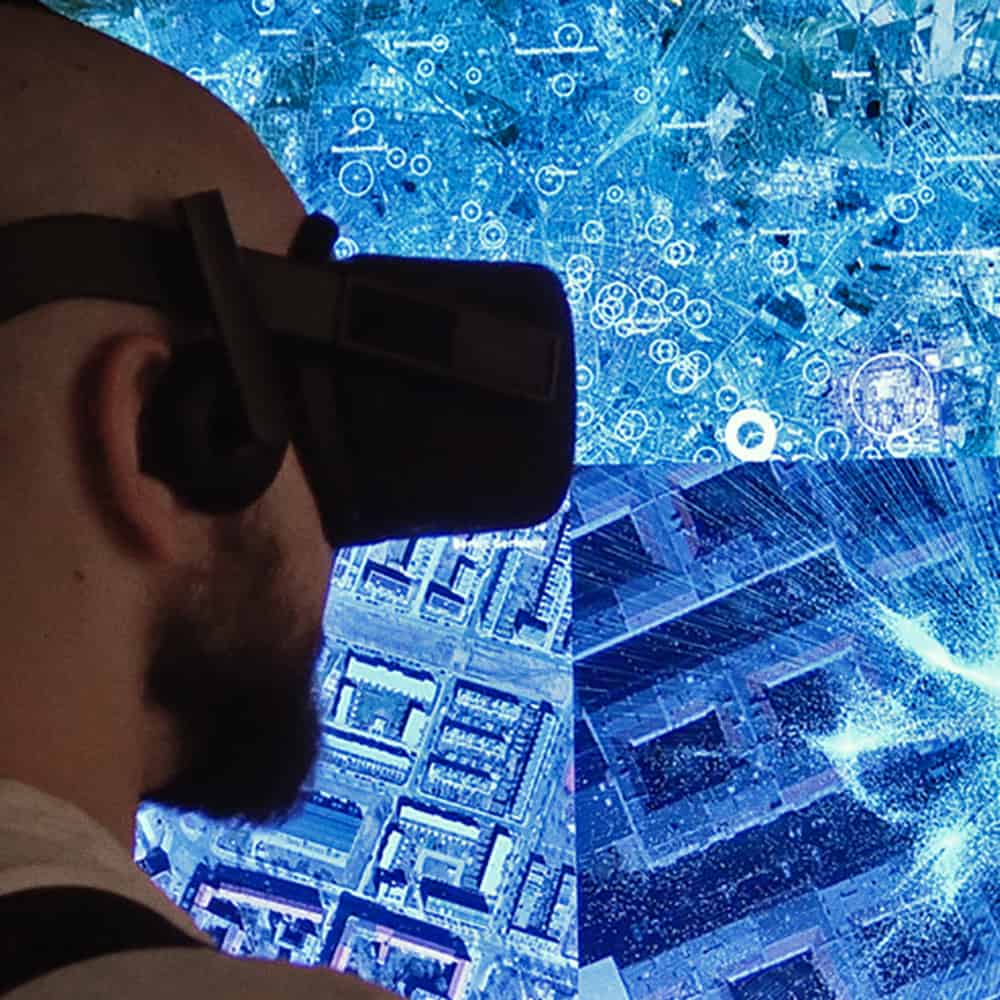DUST VR [video]
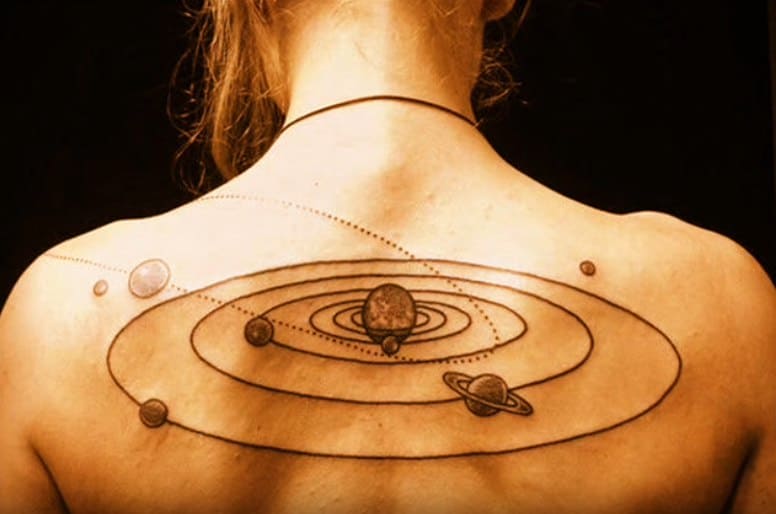
Our work DUST VR uses virtual reality to represent and investigate the invisible sphere of urban particulate matter. We give representation to the recent developments of open data and citizen science and chip away at popular incognizance of just how much dust, and now data may impact our private lives.
Dust is Data – Data is Dust
It is estimated that one human life is lost every 8 seconds due to exposure to dust. The adverse effects of exposure to ever increasing amounts of data are still not known.
Particulate matter, also known as airborne dust, is universally familiar. Volcanic ashes, sandstorms, forest fires, construction residue, vehicle and industrial emissions are among the largest contributors today, but the origins of the planet, all known species and the universe itself derive from dust borne by interstellar dust clouds.
Data Clouds
The singularity and omnipresence of dust is no longer unrivaled. In the new world, interstellar dust clouds may be overshadowed by virtual data clouds. Data has become the new essential building block. Much like dust, data is amorphous: sometimes filtered, sometimes free flowing. Like dust, data passes through us and all around us.
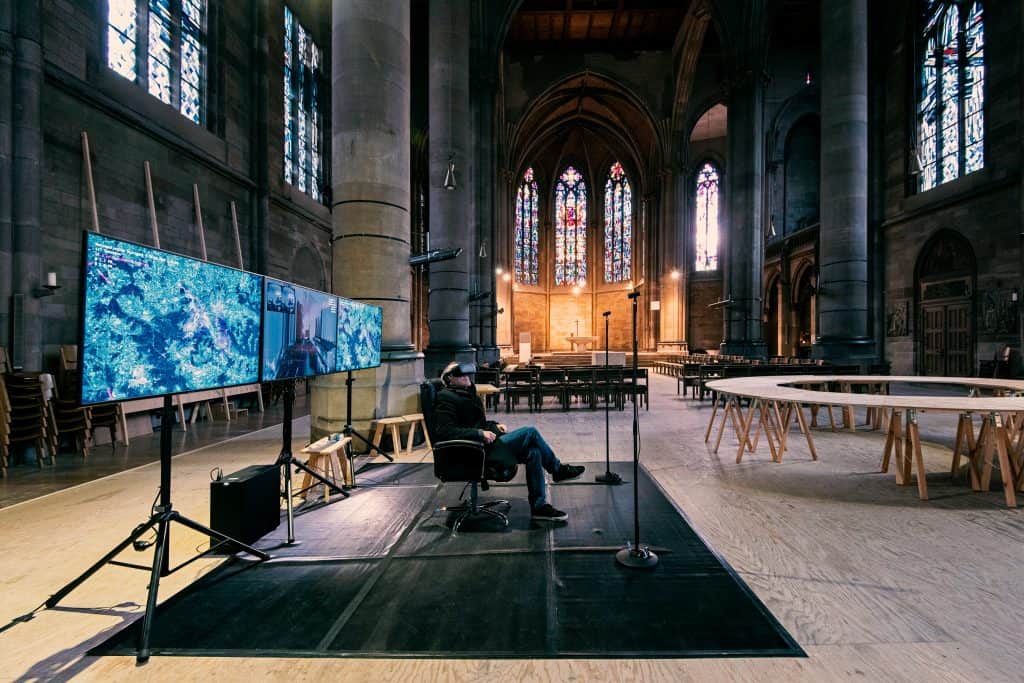
Sensors and Sovereignty
People have long understood dust may be harmful and have sought to avoid undue exposure. But until recently the definition and monitoring of the threat level depended on governments and institutions and the biases they bring to their assessment of costs and benefits.
Curiously, data now empowers people to do their own cost-benefit analysis: individuals can carry out environmental tests privately with low cost sensors and distribute the results on the internet, bringing about a culture of “citizen science”. Our work 4 DUST VR enables viewers to experience virtual exposure to microscopic matter suspended in the atmosphere.
The outer panels of the triptych display a map with realtime environmental data metrics such as air pollution, traffic density and radioactivity levels. A virtual reality head mounted display allows the viewer to visit the sites.

Vast amounts of data are not comprehensive as the majority of people don’t know how to apply such data and either wouldn’t have the time or inclination to use it. Therefore we aim to establish an open platform for monitoring, experiencing and communicating environmental data as meaningful information.
Many of us will produce, curate and consume such data in the very near future, promoting democratic benefits such as education, transparency and civic engagement.
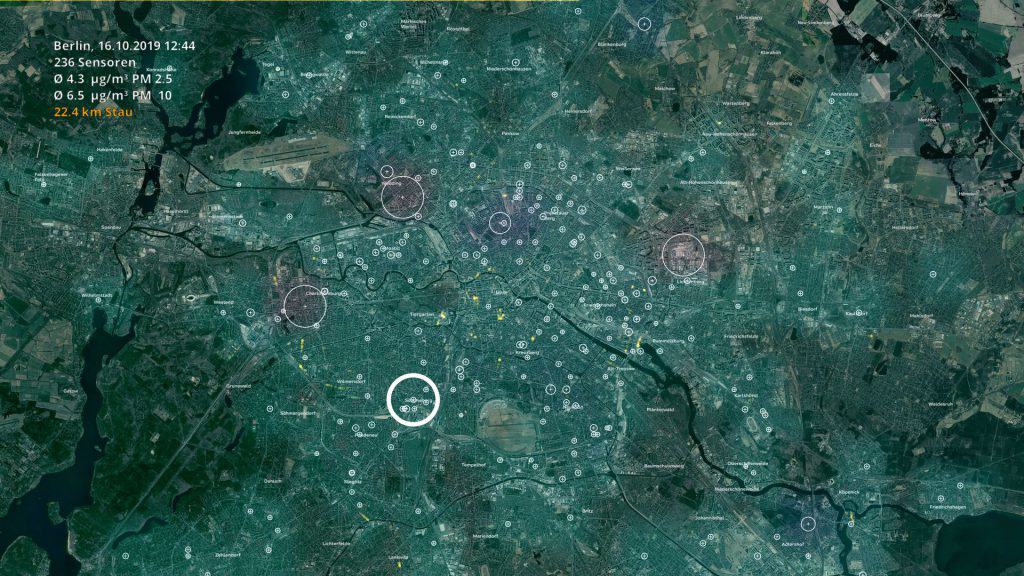
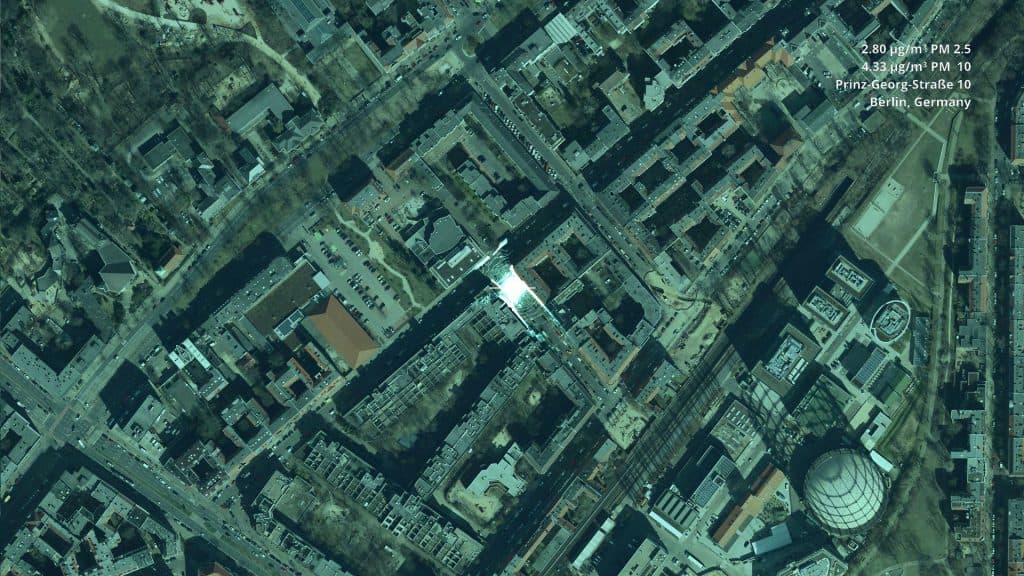
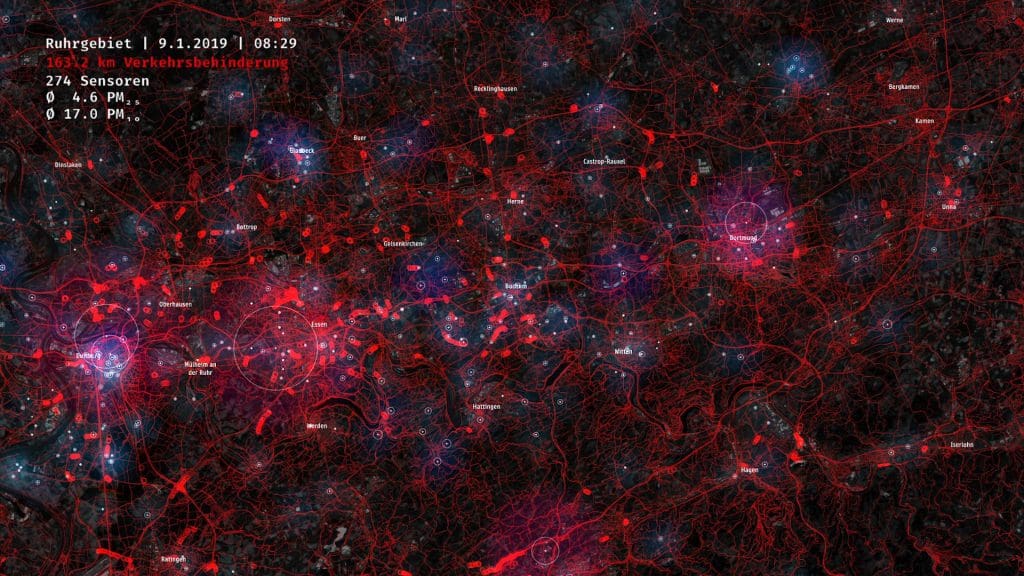
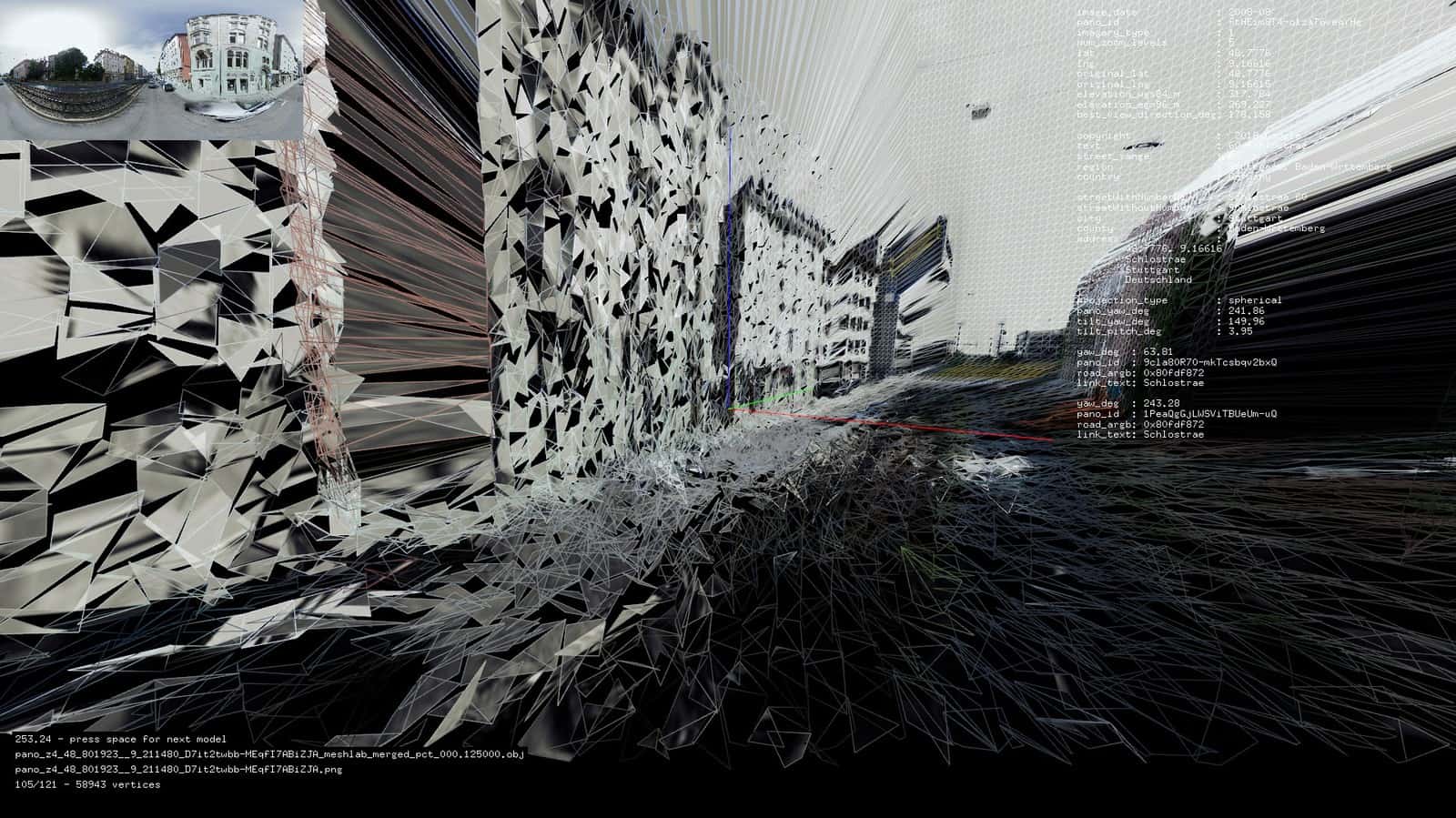

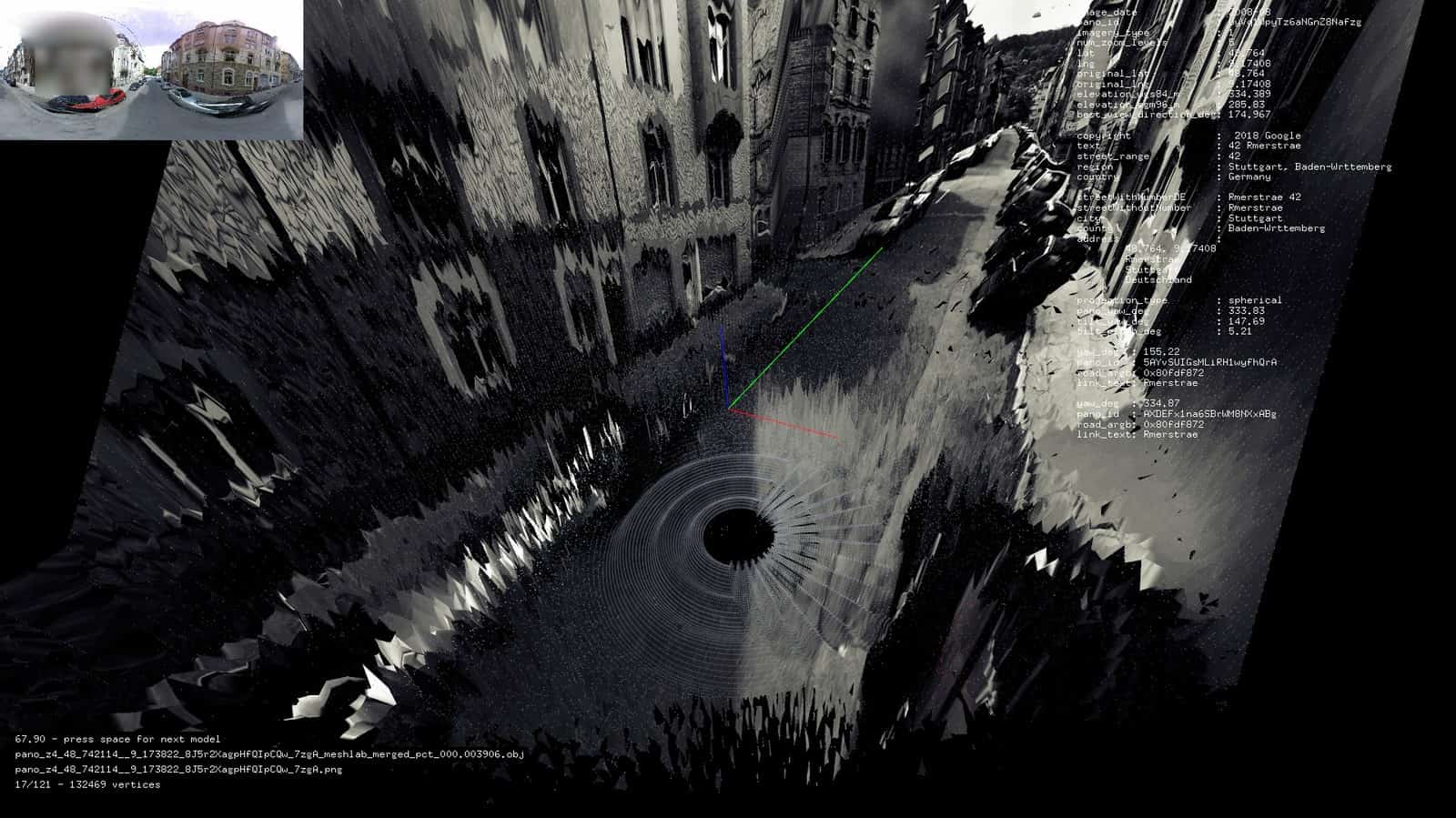
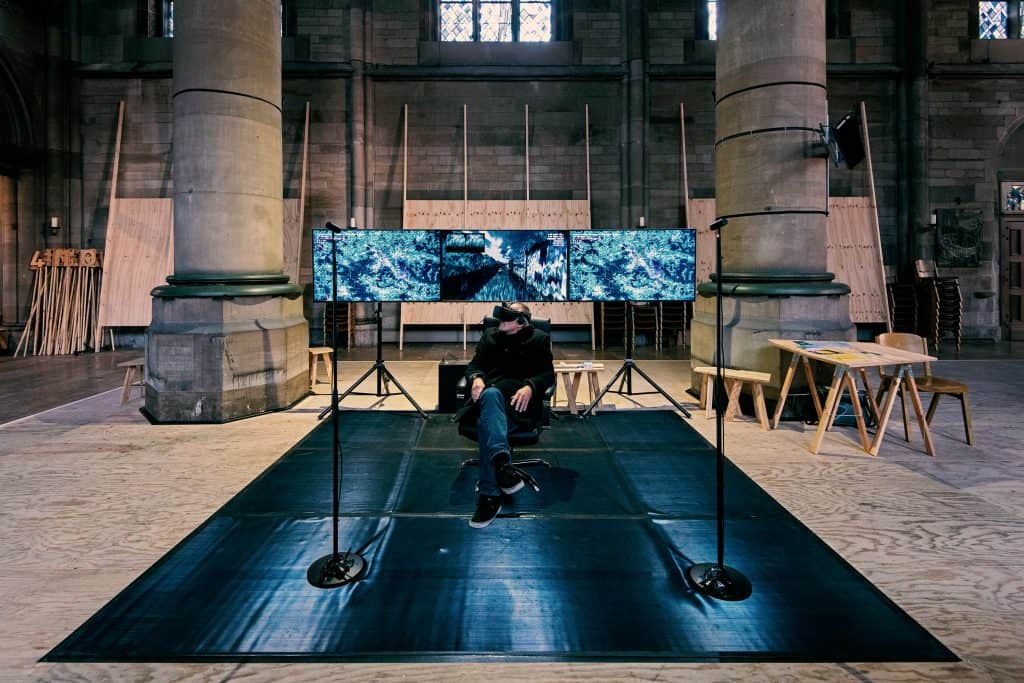
Authors
Michael Saup is an artist, instrumentalist, coder and filmmaker. He has acted as professor of digital media art at HfG/ZKM University in Germany and as the founding director of the Oasis Archive of the European Union. He is the co-founder of the Open Home Project, a humanitarian initiative to help people being affected by nuclear disaster. Amongst others, his work has been awarded by the Ars Electronica and the UNESCO Commission. Michael Saup’s work focuses on the underlying forces of nature and society; an ongoing research into what he calls the “Infossil Archaeology of Future”. His work, often in cooperation with other artists, has been shown widely in exhibitions, festivals and on stages around the world. He currently lives and works in Berlin.
Matevž Kolenc is a composer, arranger, producer and instrumentalist. He started his career as a music composer for theatre performances, but later became a driving force behind the band Melodrom with whom they released four full length studio albums between 2004 and 2010 (Nika records). Since 2012 he is also an active member of Laibach, for whom he writes, arranges and produces music. Most notably, he collaborated with Laibach on their albums “Spectre” and “Also sprach Zarathustra” (2017, Mute records), last being entirely his work, originally created for the purpose of a theatre performance by the same name (directed by Matjaž Berger), and later released as a full length album and also performed in rearranged version by Laibach with Lviv Philharmonic Orchestra (2018).
Credits
- Co-produced by Drehmoment – KulturRegion Stuttgart curated by Benjamin Heidersberger
- Supported by High Performance Computing Center Stuttgart (HLRS)
- Supported by Oval Office / Schauspielhaus Bochum curated by Tobias Staab
- with the help of Andrea Winter, Andreas Erhart, Dietmar Offenhuber, St Maria Kirche Stuttgart, C++, Meshlab, QGIS and openframeworks
- data feeds by
- https://luftdaten.info and
- https://here.com
- pointclouds by https://www.google.com, fair use for cultural and educational purposes
